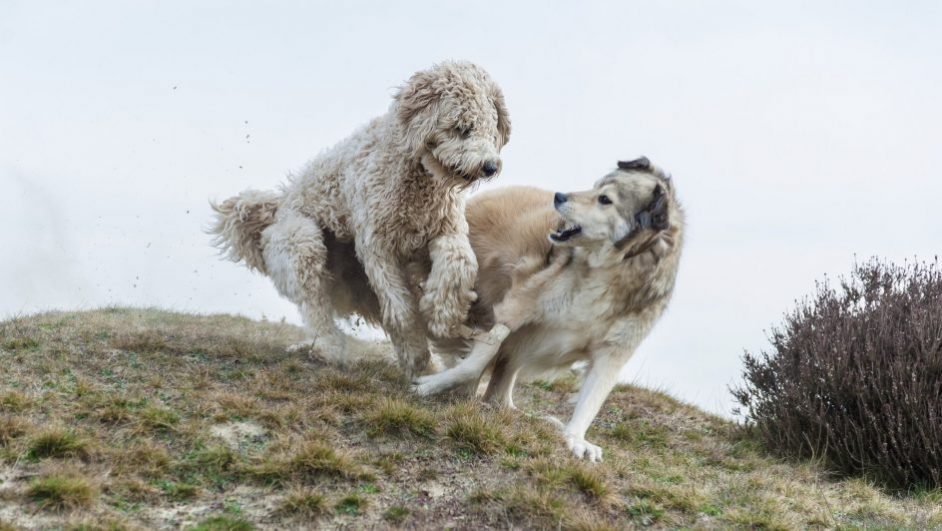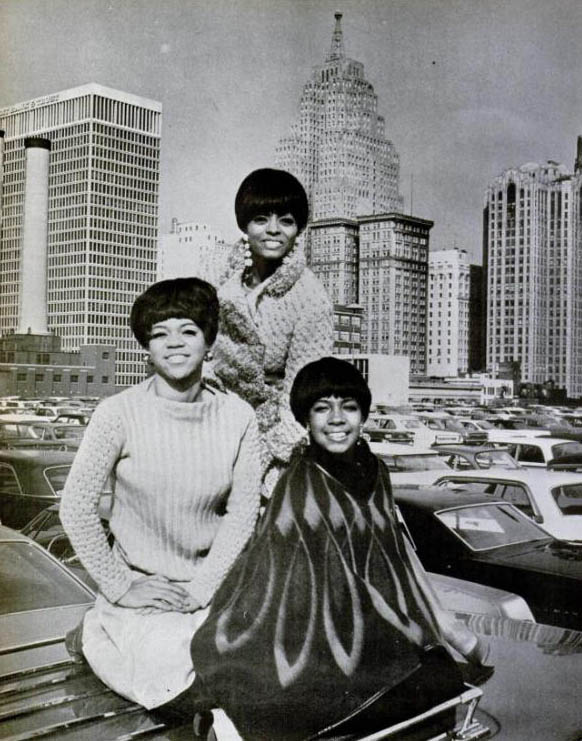Daniel Vollaro’s essay, “The Lookout Tree,” appears in Michigan Quarterly Review’s Summer 2019 issue.
The Dogs of War are halfway down the hill when we first see them—a skin-and-bones Golden Retriever with a long reddish snout and trailing behind it, a smaller mutt, brown and fierce with patches of fur torn off and one whitish eye. We are standing near the tree line, Danny and I, at that place where two apple trees rise from the center of a small meadow filling the air with a fruited, blossomy fragrance. The dogs are moving fast and headed directly at us.
There is nowhere to run but into The Woods.
We bolt into the trees, powered by a primeval instinct for self-preservation, me in the lead, and Danny following close behind. I can hear him breathing hard behind me as we crash through the wall of low-hanging maple branches to the trail we know is on the other side.
The trail is familiar and safe, cutting a steep downhill path toward the river, curving through a stand of tall pine trees. At first, I can hear the hard thudding of our sneaker soles on dirt, but that soon gives way to the swish swish of our footfalls on a soft, slippery bed of brown pine needles. Without a word passing between us, we know exactly where to go.
I am the first to grab the lowest branch of Lookout Tree—firmly, in both hands—thrusting my body upward in a single smooth motion as I have done a hundred times before but never with two stray dogs at my heels. The next branch is in my hand, and then the next, and I am climbing the tree. I can hear Danny behind me, straining to clear the first branch and then the next. He follows me up the shadowy green interior of the tree to the Deer Stand, which is entirely hidden from the ground about ten feet up from the forest floor, nailed to two branches, each one as thick as a man’s leg. We both collapse onto the warped plywood platform and lay side by side, too exhausted to speak.
We are safe, for the moment.
When my breathing slows, I roll sideways to stare over the edge of the platform. Looking down through the pinwheel of thick lower branches radiating out from the trunk, I search for the dogs below. I can hear them huffing and panting, but they are hidden from view. And then I see it: that single, pale white eye staring straight up at me from the forest floor.
“Are they gone?” Danny gasps. He is still a heap on the platform, motionless except for the heaving of his chest.
“Nope,” I say. “We’re gonna have to wait.”
***
Danny does not like dogs. Once, when we were cutting through backyards in our neighborhood on our way home from The Woods, a German Shepherd ran out from behind a hedgerow and startled us. The dog was baring its teeth and pacing and snarling in a familiar back-and-forth perambulation that signaled, without ambiguity, that it was marking its territory. Without hesitating, Danny unbuckled his Army surplus store canteen from his authentic Army-issue web belt and swatted the dog across the snout with it. The German Shepherd yelped pitifully and ran back into the hedgerow, beaten.
Dogs are always challenging us like this. There is no mystery in it: we are dog-sized creatures, smaller and less intimidating than adult humans, and we are always transgressing their territory. For the boys of Clinton Knolls housing development, the intersecting backyards of our neighborhood form a corridor through which we freely transit from one end to the other. There are no fences separating yards, and we have not yet internalized the tyranny of Property. We are little Communists, having been raised with a sense of communal belonging to this place. We range the neighborhood with an unremitting confidence that we own every square inch of yard, sidewalk, walkway, garden plot, jungle gym, sandbox, and tree swing. Dogs, however, are fiercely territorial. Their masters may not care that their property is daily invaded by little trespassers, but dogs are willing to go to war over crossed boundaries.
These encounters with neighborhood dogs are civilized and circumscribed. We know that backyard dogs are fierce barkers and growlers, but we also know that these displays will almost never escalate to biting. These dogs are raised around children and domesticated to be deferential to humans, so they know that we are not a mortal threat. Everyone knows the rules of engagement and obeys them.
But no one knows exactly what a stray dog will do.
Everyone knows that the Dogs of War began as backyard dogs. The Retriever is still wearing a collar and tags (not that anyone has ever come close enough to read them), but years of sleeping in the cold and eating roadkill and entrails from deer carcasses have made them mean and dangerous, or so we have been told by the older boys in the neighborhood who delight in scaring us. They tell us the dogs are rabid, but I know that this is a lie because rabid dogs die within a week of being infected. They tell us the dogs once cornered, killed, and ate a cat, but I have seen cats chased by dogs head for the nearest tree, and there are a lot of trees in our neighborhood. They tell us the story about the kid from Clinton Township whose arm was so badly bitten by the Dogs of War that he spent two weeks in the hospital and nearly lost his arm. When I first heard that story, I remember thinking that it was plausible, simply because if I had told it, I would have said that the arm was bitten clean off in the attack and then carried into The Woods like a chew toy. It was the restraint—the lack of embellishment—that made this story believable.
There is supposed to be a third Dog of War—a big scary black Doberman—but I have never seen it.
Big dogs are scary. The family that lives across the street from Danny once owned a St. Bernard and kept it outside in an oversized dog house corralled within a tall wood picket fence. We sometimes sidled up to the fence and peered through a gap between two slats or grabbed hold of the tapered top ends of two pickets and hoisted ourselves up high enough to see over the top. Inside the pen, the dog was always pacing, ignoring us completely, as if this ritual had become its sole purpose in life. One day, the dog managed to leap over the fence and was loose in the neighborhood for an entire day before being caught and brought back to its pen. All of the mothers on our street kept their children indoors that day, and I was thankful for it. I was secretly terrified of that dog.
The St. Bernard breached the fence a few more times, but on one unsuccessful final attempt, its collar caught on one of the pickets and the poor animal slowly strangled to death, hanging from the fence by its neck. We all believed that the St. Bernard had been driven crazy by its confinement, and everyone knows that there is nothing scarier than a mad dog.
As we stare down through those branches, Danny and I are both thinking about that St. Bernard, and the collective wisdom we have gathered about dogs. I am looking for that blind eye peeking up through the branches, but the mutt and the Retriever are out of view. What dead, rotting things has that eye seen, I wonder? What creatures torn limb from limb? One thing is certain: we are not going back down that tree trunk until we are certain that the Dogs of War have gone.
Read the rest of Daniel Vollaro’s essay, “The Lookout Tree,” in Michigan Quarterly Review’s Summer 2019 issue.




